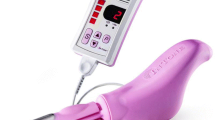Abstract
Women listed in the Croydon Community Continence database were contacted with a self-assessment questionnaire regarding continence pad usage and quality of life. Completed questionnaires were received from 763 of 1509 (51%) participants. Pads were used for bladder dysfunction (88.1%) and bowel dysfunction (44%). The majority (82.5%) had concurrent medical disorders and problems with mobility with 77.5% being on one or more types of medication. Nearly 39% of women claimed that they would be happy to continue pad use indefinitely and only 28% expressed interest in seeking further help. Compared to bowel dysfunction, bladder dysfunction appeared to have a greater impact on women’s quality of life (P < 0.001). Containment products make a substantial contribution in improving the quality of lives of women with bowel and bladder dysfunction. The financial burden of containment products has a major impact on the health budget and therefore, comprehensive clinical evaluation should be mandatory before relegating women to pads as a final resort.
Similar content being viewed by others
References
Abrams S, Cardozo L, Fall M, Griffiths D, Rsier P, Ulmsten U, Van Kerrebroeck P, Victor A, Wein A (2003) Standardisation sub-committee of the International Continence Society. Urol 61(1):37–49
The Continence Foundation (2000) Making the case for investment in an integral continence service: a source book for continence services. London
Turner DA, Shaw C, McGrother CW, Dallosso HM, Cooper NJ, The MRC Incontinence Team (2004) The cost of clinically significant urinary storage symptoms for community dwelling adults in the UK. BJU Int 93(9):1246–1252
Hunskaar S, Lose G, Sykes D, Voss S (2004) The prevalence of urinary incontinence in women in four European countries. BJU Int 93(3):324–330
Perry S, Assassa RP, Dallosso H, Shaw C, Williams K, Brittain KR, Mensah F, Smith N, Clarke M, Jagger C, Mayne C, Castleden CM, Jones J, McGrother C (2000) An epidemiological study to establish the prevalence of urinary symptoms and felt need in the community: the Leicestershire MRC Incontinence Study. J Public Health Med 22:427–434
Norton C (1996) Commissioning comprehensive continence services, guidance for purchasers. The Continence Foundation, London
Thom DH, Haan MN, Van Den Eeden SK (1997) Medically recognised urinary incontinence and risks of hospitalization, nursing home admission and mortality. Age Ageing 26(5):367–374
Stevenson B, Mills EM, Welin L, Beal KG (1998) Falls risk factors in an acute-care setting: a retrospective study. Can J Nurs Res 30(1):97–111
Heymen S (2004) Psychological and cognitive variables affecting treatment outcomes for urinary and fecal incontinence. Gastroenterology 126(1 Suppl 1):S146–S151
Salonia A, Zanni G, Nappi RE, Briganti A, Deho F, Fabbri F, Colombo R, Guazzoni G, Di Girolamo V, Rigatti P, Montorsi F (2004) Sexual dysfunction is common in women with lower urinary tract symptoms and urinary incontinence: results of a cross-sectional study. Eur Urol 45(5):642–648
Jay J, Staskin D (1998) Urinary Incontinence in women. Adv Nurse Pract 6(10):32–37
Keller S (1999) Urinary incontinence: occurrence, knowledge and attitudes amongst women aged 55 and older in a rural Midwestern setting. J Wound Ostomy Continence Nurs 26:30–38
Kinn AC, Zaar A (1998) Quality of life and Urinary Incontinence pad use in women. Int Urogynecol J 9:83–87
Acknowledgements
We would like to thank Kirsten Goodman for her dedicated assistance in data collection.
Author information
Authors and Affiliations
Corresponding author
Rights and permissions
About this article
Cite this article
Uchil, D., Thakar, R., Sultan, A.H. et al. Continence pads: have we got it right?. Int Urogynecol J 17, 234–238 (2006). https://doi.org/10.1007/s00192-005-1341-2
Received:
Accepted:
Published:
Issue Date:
DOI: https://doi.org/10.1007/s00192-005-1341-2




